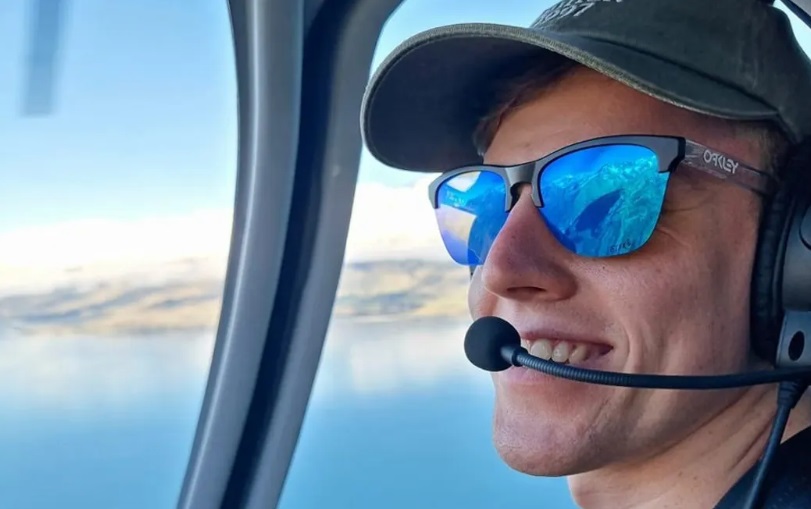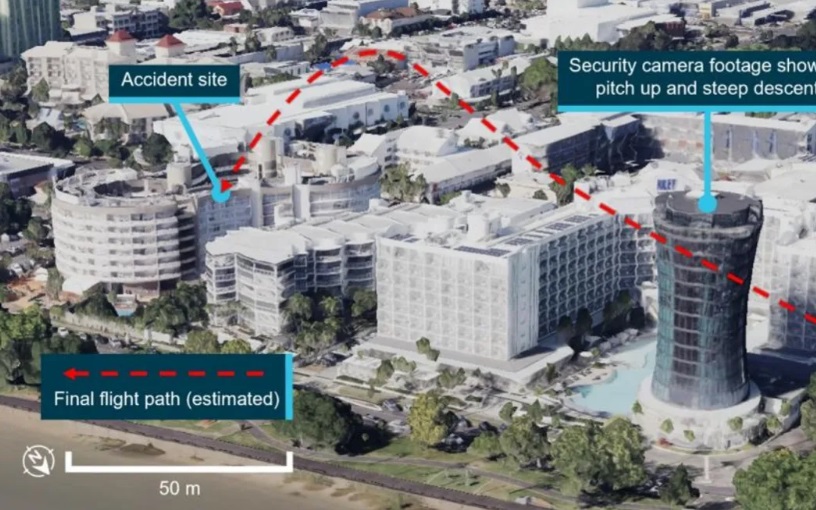An investigation into a Queensland helicopter crash that killed a Kiwi pilot in August has found he was intoxicated, broke aviation rules and appeared to be trying to evade being detected.
But officials are none the wiser as to why he did it.
Blake Wilson, 23, died after taking a helicopter from his employer's hangar in Cairns and flying into a no-fly zone over the city before crashing into the roof of the DoubleTree hotel.
His employer, Nautilus Aviation, said he had been celebrating his promotion with workmates on Sunday night, before he took the helicopter early on Monday morning.
Wilson, who worked for a time at Coronet Peak in Queenstown, held a New Zealand commercial helicopter licence, but was not authorised to fly in Australia.
He was the only person killed in the accident.
A report by the Australian Transport Safety Bureau, released on Thursday, said witnesses - backed up by video recordings - said they had seen Wilson drinking alcohol that night.

After flying past his own apartment and looping around over the Cairns wharf complex, Wilson flew around the marina, down the shoreline and back over his apartment before "pitching up, then almost immediately descending steeply before colliding into the roof of the hotel" at 1.51am.
The helicopter stayed low during the entire flight, not getting above 500 feet (150m) in height - well below the 1000-foot (300m) "above the highest feature or obstacle" minimum height limit.
When it crashed, impact marks and how the wreckage was distributed suggested it was upside-down, the report said.
Wilson had more than 150 hours' flight experience, including just over 10 at night. The last booked flight he had taken was in February in New Zealand.
He had been employed by Nautilus Aviation as a ground crew member since April.
"A toxicology report indicated that the pilot had a significant blood alcohol content," the report said. No traces of any other drugs were found in his system.
The keys were already in the helicopter when he arrived at the hangar, the report said.

Security staff at the base were not near the hangar, the report said, and Wilson had turned off the helicopter's strobe lights, eliminating a "visual cue" that would have attracted attention.
The investigation found the flight was "an unauthorised but purposeful act", but no reason could be determined. Nothing was found wrong with the helicopter nor the weather conditions, except a light drizzle.
"The pilot was affected by a significant amount of alcohol before and during the flight. The pilot further increased risk to themselves and those on the ground by conducting the unauthorised flight well below the 1000 ft allowed for flight over a built-up area.
"While the pilot held a helicopter commercial pilot licence and had experience flying the Robinson R44, the pilot was not approved to fly the operator's helicopters at any time. Additionally, the pilot did not hold the appropriate rating to fly helicopters at night and had never flown a Robinson R44 at night.
"Aviation transport security regulations are in place to keep unauthorised persons out of airports.
"However, as a ground crew of the operator, the pilot was authorised to have access to the helicopter at Cairns Airport and took advantage of that access. Further, based on the strobe lights being turned off, it was apparent that the pilot was wanting to conceal the departure from the airport from air traffic control and airport staff."













